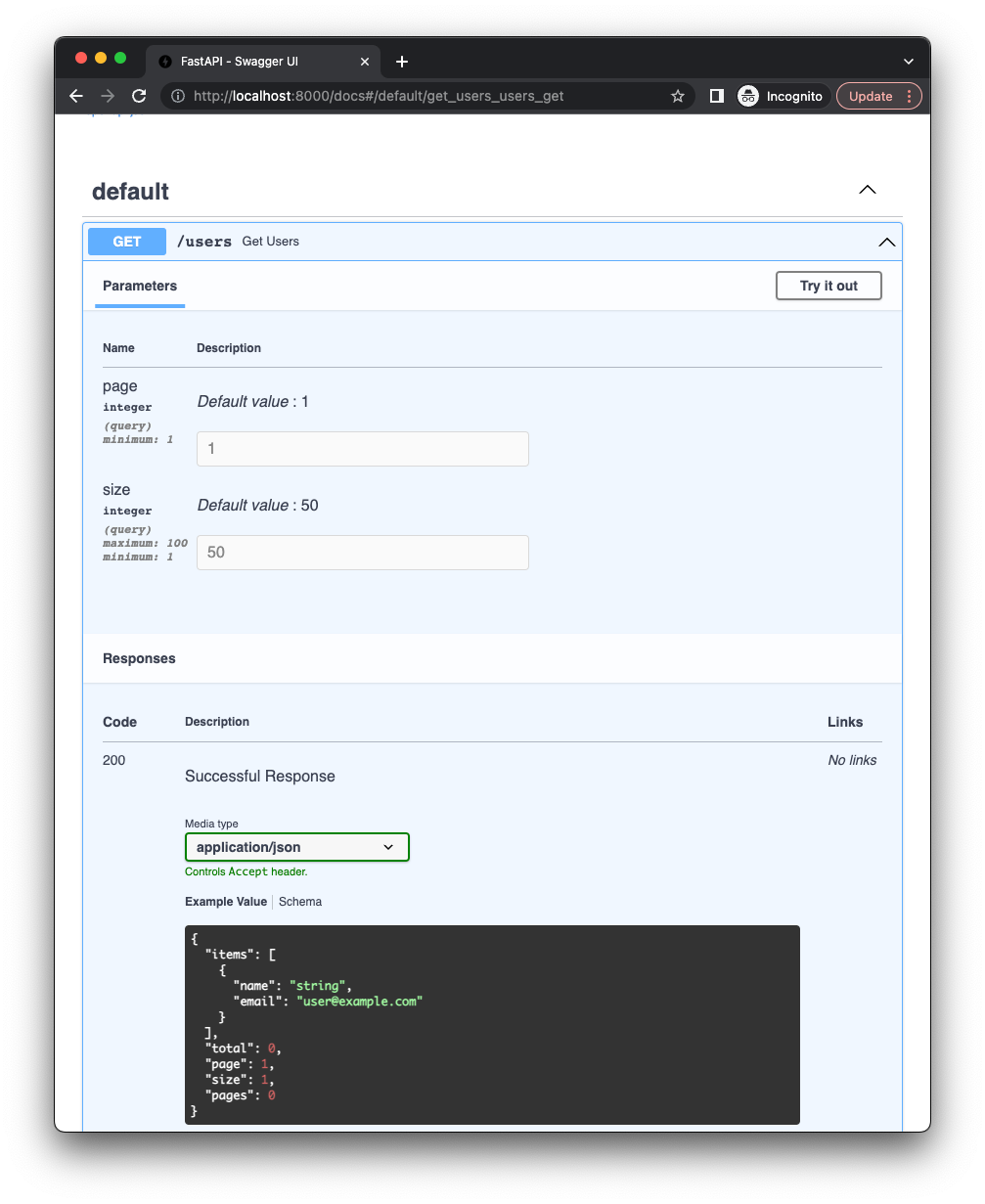Page Number Pagination
You can use page-number pagination type to paginate data by page number. It is the most common pagination type.
In this tutorial, you will learn how to use page-number pagination type.
General information
page parameter is used to specify the page number, and size parameter is used to specify the number of items per page.
For instance if you have 100 items and you want to get 10 items per page, you will have 10 pages.
By default, page is 1 and size is 50, but you can change them.
Response schema will contain:
items- list of items paginated items.page- current page number.size- number of items per page.pages- total number of pages.total- total number of items.
Example
To use page-number you need to import Page from fastapi_pagination and use it as a response model.
from typing import List
from fastapi import FastAPI
from pydantic import BaseModel, EmailStr
from fastapi_pagination import Page, add_pagination, paginate
app = FastAPI()
add_pagination(app)
class UserOut(BaseModel):
name: str
email: EmailStr
users: List[UserOut] = [
# ...
]
@app.get("/users")
def get_users() -> Page[UserOut]:
return paginate(users)
Now when we will call /users endpoint we will get paginated data like this:
{
"items": [
{
"name": "John",
"email": "john@example.com"
},
{
"name": "Jane",
"email": "jane@example.com"
},
{
"name": "Bob",
"email": "bob@example.com"
}
],
"page": 2,
"size": 3,
"pages": 34,
"total": 100
}
OpenAPI
Code above will add pagination parameters to the endpoint and you will see them in the OpenAPI docs.
